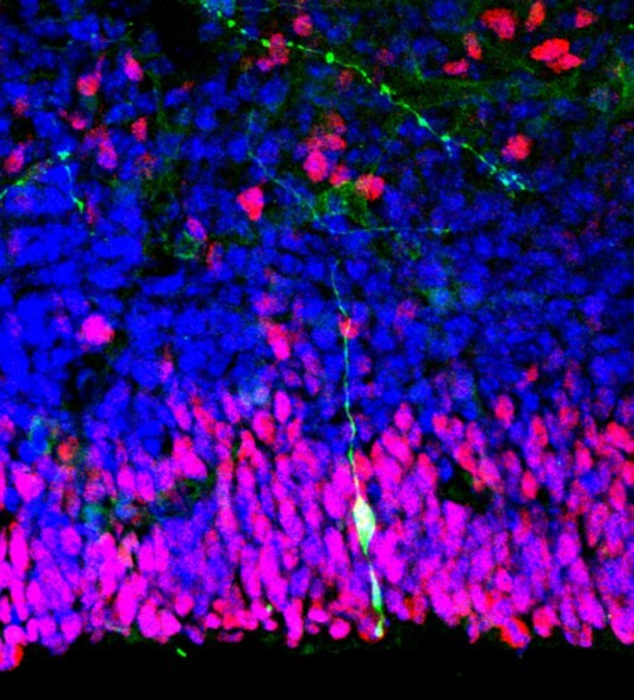Stem cells are essentially our body’s raw materials – cells that give rise to all other cells and tissues with specialized functions. The conversion into specific cells occurs through a process called “differentiation,” in which stem cells divide to form daughter cells. This lends itself to practical applications in regenerative therapy, where functional healthy cells generated from stem cells can be used to cure injuries and cellular damages in our body.

Credit: CodonAUG from openverse
Stem cells are essentially our body’s raw materials – cells that give rise to all other cells and tissues with specialized functions. The conversion into specific cells occurs through a process called “differentiation,” in which stem cells divide to form daughter cells. This lends itself to practical applications in regenerative therapy, where functional healthy cells generated from stem cells can be used to cure injuries and cellular damages in our body.
However, things are easier said than done. Performing stem cell differentiation in the laboratory requires meticulous preparation and addition of differentiation factors into a cell cultivation medium, a laborious and time-consuming process. Moreover, it is largely reliant on the researcher’s skill. In light of this, a new platform that facilitates a stable supply of differentiation factors over a long period is highly desirable.
In a new study, researchers from Korea, led by Associate Professor Tae-Hyung Kim of school of integrative engineering at Chung-Ang university, came up with an ingenious solution. They developed a novel platform based on metal-organic frameworks (MOFs), hybrid crystalline porous materials constructed using metal ions and organic ligands (ions/molecules attached to the metal ion). Due to their porous nature, MOFs are excellent for trapping and releasing molecules of interest over a long period of time. This gave the team the idea to use MOFs for storing and releasing biocompatible nanoparticles necessary for stem cell differentiation. This paper was made available online on 20 April 2022 and was published in Volume 8, Issue 16 of the journal Science Advances on 20 April 2022.
In their study, the team chose neural stem cells as a proof of concept and embedded nanoparticles loaded with retinoic acid, an essential component for neuronal differentiation, into the nanocrystalline MOF, nUiO-67. There was, however, one issue to be considered. “Adding nanoparticles directly to the cell cultivation medium may cause safety issues when used for therapeutic purposes and can also cause damage to the nanoparticle structures owing to the presence of redox enzymes and reactive oxygen species (ROS) in the intracellular environment,” explains Dr. Kim.
To get around this problem, the team separated the stem cells from MOFs by creating periodic pattern of nanopit arrays using a technique called “laser interference lithography.”
By optimizing these nanopit arrays such that each array captured a single MOF, the team came up with the platform called “single metal-organic framework (MOF) nanoparticle–embedded nanopit arrays (SMENA)” that could automatically convert stem cells into neurons.
SMENA offered two big advantages over the conventional method for in vitro stem cell differentiation. Firstly, it obviated all the complex experimental steps and typical issues related to cell contamination and batch-to-batch variation. Secondly, and surprisingly, the continuous and stable supply of differentiation factors made for accelerated differentiation, resulting in approximately 40-fold higher expression of neuronal cell markers (indicating the generation of neurons) compared to that for standard protocols.
These findings have excited the team about the future prospects of SMENA. “The platform developed in our study could facilitate and accelerate the use of various stem cell sources for clinical applications and drug screening. The functional cells produce through SMENA can be used to treat various diseases and disorders, including Alzheimer’s and Parkinson’s diseases,” speculates Dr. Kim. The paper was also recently featured as a research highlight in Nature Reviews Materials by the Associate Editor, Charlotte Allard.
We certainly hope Dr. Kim’s visions about SMENA are realized soon!
***
Reference
DOI: https://doi.org/10.1126/sciadv.abj7736
Authors: Yeon-Woo Cho1, Seohyeon Jee2, Intan Rosalina Suhito1, Jeong-Hyeon Lee1, Chun Gwon Park3,4, Kyung Min Choi 2,5, Tae-Hyung Kim1
Affiliations
1School of Integrative Engineering, Chung-Ang University
2Department of Chemical and Biological Engineering, Sookmyung Women’s University
3Department of Biomedical Engineering, SKKU Institute
for Convergence, Sungkyunkwan University (SKKU)
4Department of Intelligent Precision Healthcare Convergence, SKKU Institute for Convergence, Sungkyunkwan University (SKKU)
5LabInCube Co. Ltd.
About Chung-Ang University
Chung-Ang University is a private comprehensive research university located in Seoul, South Korea. It was started as a kindergarten in 1918 and attained university status in 1953. It is fully accredited by the Ministry of Education of Korea. Chung-Ang University conducts research activities under the slogan of “Justice and Truth.” Its new vision for completing 100 years is “The Global Creative Leader.” Chung-Ang University offers undergraduate, postgraduate, and doctoral programs, which encompass a law school, management program, and medical school; it has 16 undergraduate and graduate schools each. Chung-Ang University’s culture and arts programs are considered the best in Korea.
Website: https://neweng.cau.ac.kr/index.do
About Associate Professor Tae-Hyung Kim
Tae-Hyung Kim is an Associate Professor at Chung-Ang University’s School of Integrative Engineering in Korea. He received his B.S. in Chemical Engineering and Ph.D. in Chemical and Biomolecular Engineering from Sogang University, Korea. He was a postdoctoral researcher at the Department of Chemistry and Chemical Biology at Rutgers University, USA. His study focuses on the non-destructive and non-invasive regulation and monitoring of cellular processes using different nanomaterials. He has over 90 peer-reviewed publications to his credit. He serves on the editorial boards of several international journals, notably as Managing Editor of Nano Convergence and Associate Editor of BioChip Journal.
Journal
Science Advances
DOI
10.1126/sciadv.abj7736
Method of Research
Experimental study
Subject of Research
Cells
Article Title
Single metal-organic framework–embedded nanopit arrays: A new way to control neural stem cell differentiation
Article Publication Date
20-Apr-2022
COI Statement
Tae-Hyung Kim, Yeon-Woo Cho, Kyung Min Choi, and Seohyeon Jee are inventors on a patent application related to this work filed by Chung-Ang University and Sookmyung Women’s University (no. 10-2021-0135498, published 13 October 2021). All other authors declare that they have no competing interests.




